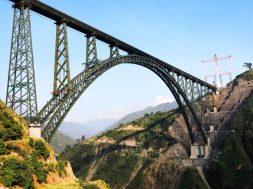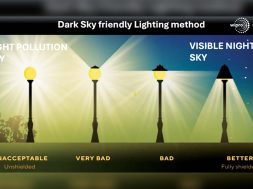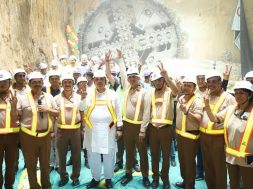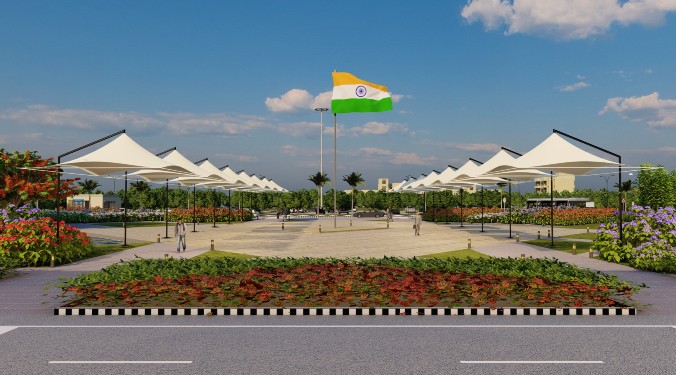
Installing water efficient plumbing fixtures, solar water heating systems, water flow meters, adopting waste management practices, etc., will go a long way in making plumbing operations greener.
Dr Prem C Jain, Chairman, IGBC
By 2030, building stock in India is expected to reach 100 billion sq. ft… We therefore need more of trained and qualified plumbers, says Dr Prem C Jain, Chairman, IGBC. Further he observes that the focus should also be on excellent plumbing designs and practices which are ecologically superior and economically viable. Interview excerpts:
What makes plumbing green?
With almost every city reeling under massive water deficits and fast receding groundwater tables, the need of the hour is to go the green and water efficient way. Moreover, with growing urbanisation, the need and importance of plumbing has grown over the years.
Today, we find buildings, high rise apartments, townships and other forms of built environment demanding more of plumbing requirements. Plumbing has evolved as a discipline which is gaining increased attention from the building industry.
Historically, plumbing was done with GI. However, with improved technological interventions, now the shift is towards copper and PVC pipes. Each of the materials has their own merits.
How green plumbing contributes to green buildings?
Plumbing is a critical part of green building. It acts an important conduit for pumping water. Installing water efficient plumbing fixtures, solar water heating systems, water flow meters, adopting waste management practices, etc., will go a long way in making plumbing operations greener. Green buildings are encouraged to follow the Uniform Plumbing Code baselines.
How plumbing plays a critical role even in getting green ratings?
Indian Green Building Council (IGBC) adopts a multi-pronged approach towards addressing water management and plumbing in green buildings. In this regard, concepts like reduce, reuse or recycle and recharge are fully encouraged in IGBC Green Building Rating Systems.
IGBC rated green buildings save about 20 to 30 per cent of water, and consciously incorporate features which facilitate significant reduction in fresh water demand. IGBC rating encourages reduction of water usage right from the construction stage.
In all the 14 IGBC Green Building Rating System, there is increased focus on water management and conservation. IGBC rating encourages the project team to choose ultra-low flow and flush fixtures. Aerators are fitted to taps, drastically bringing down water consumption. Though aerators are small in size, they make a big impact. The desired specifications of the faucets are based on the Uniform Plumbing Code of India, promoted by IPA and IAPMO.
What are IGBC’s initiatives in creating awareness on this important aspect?
IGBC is working with various stakeholders on highlighting the need and importance of water management, rainwater harvesting, storage structures, and re-use. IGBC has inked MoU with IAPMO-India and the IPA to develop public awareness campaigns to promote efficient water and energy consumption concepts and technologies.
We annually observe World Green Building Week across the country, where the need and importance of water management is given top priority. IGBC also conducts drawing competitions for school children on environment and water management.
Do we have adequate regulations or norms in place to support IGBC’s mission?
IGBC envisions to facilitate India emerge as one of the global leaders in sustainable built environment by 2025. Towards this direction, support from the government is excellent. Central and several state agencies have already given due recognition to IGBCs’ green building initiatives. Some of the incentives offered to IGBC projects include:
• Department of Industrial Policy and Promotion (DIPP) under Ministry of Commerce and Industry offers incentive of Rs 2 lakhs for all buildings which obtain a green rating from IGBC in accordance to National Manufacturing Policy.
• The Ministry of Environment & Forests (MoEF) offers fast track environmental clearance for projects following IGBC guidelines and are pre-certified.
• Government of Punjab (Punjab Urban Development Authority) offers an additional 5 per cent FAR free of charge for projects adopting IGBC’s Green Building Rating Programs.
• Rajasthan government (Jaipur Development Authority) is offering an additional 5 per cent FAR free of charge for projects which are rated gold and above as per IGBC’s Green Building Rating Programs.
• Government of West Bengal (Kolkata Municipal Corporation) offers additional 10 per cent FAR for IGBC pre-certified projects which are rated as gold or above.
• All IGBC rated projects in the MSME sector shall be eligible for financial assistance at concessional rates from Small Industries Development Bank of India (SIDBI).
• Government of Uttar Pradesh (Housing and Urban Planning Department) gives additional 5 per cent FAR free of charge for IGBC gold and above rated buildings.
• Pune Municipal Corporation (PMC) offers a refund of up to 15 per cent of premium for IGBC Certified Green Buildings which are rated as silver or above.
India needs 12 lakh trained plumbers by 2020. What’s your take on this?
By 2030, building stock in India is expected to reach 100 billion sq. ft. This in turn would result in increased demand for trained plumbers. Already, there is acute shortage of trained plumbers. We therefore need more of trained and qualified plumbers. The focus should also be on excellent plumbing designs and practices which are ecologically superior and economically viable.
The need of the hour is also to have certified water-efficient plumbing fixtures and appliances. This will not only sensitise the end-users but will also open new growth opportunities to the stakeholders. IGBC would work closely with the stakeholders in addressing this imperative and also facilitate in equipping trained plumbers go the green way.
Cookie Consent
We use cookies to personalize your experience. By continuing to visit this website you agree to our Terms & Conditions, Privacy Policy and Cookie Policy.









